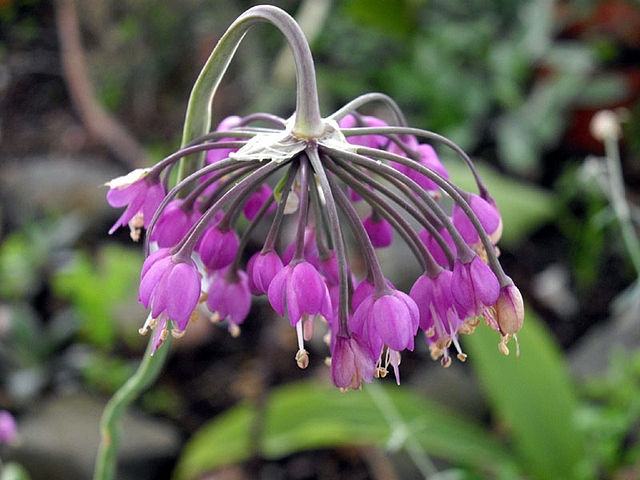Nodding Onion
(Allium cernuum)
Nodding Onion (Allium cernuum)
/
/

Ghislain118
CC BY-SA 3.0




























Estimated Native Range
Summary
The nodding onion is valued for its ornamental flowers and its ability to attract pollinators such as bees and butterflies. It is often used in naturalistic plantings, rock gardens, and borders. The plant is drought-tolerant once established, making it suitable for xeriscaping. Additionally, Allium cernuum is edible, with a flavor similar to chives, and can be used in culinary applications. While it is generally low-maintenance, it can be susceptible to onion fly and thrips. It is also worth noting that this plant can self-seed and spread, which should be considered when planting in smaller gardens or where invasiveness might be a concern.CC BY-SA 4.0
Plant Description
- Plant Type: Herb
- Height: 1-2 feet
- Width: 0.6-0.9 feet
- Growth Rate: Moderate
- Flower Color: Pink, Purple
- Flowering Season: Spring, Summer
- Leaf Retention: Deciduous
Growth Requirements
- Sun: Full Sun, Part Shade
- Water: Low, Medium
- Drainage: Medium, Fast
Common Uses
Bee Garden, Bird Garden, Border Plant, Butterfly Garden, Deer Resistant, Drought Tolerant, Edible*Disclaimer: Easyscape's listed plant edibility is for informational use. Always verify the safety and proper identification of any plant before consumption., Fire Resistant, Fragrant, Groundcover, Hummingbird Garden, Low Maintenance, Potted Plant, Rabbit Resistant, Rock Garden, Salt Tolerant, Showy Flowers, Street Planting
Natural Habitat
Dry, open woods, grasslands, and rocky outcrops
Other Names
Common Names: Lady’s leek
Scientific Names: , Allium cernuum, Allium recurvatum, Allium cernuum var. cernuum, Allium allegheniense, Allium oxyphilum, Allium cernuum var. obtusum, Allium neomexicanum, Allium cernuum var. neomexicanum, Allium alatum
GBIF Accepted Name: Allium cernuum Roth